The advances of the 21st century are truly remarkable. We can hold 10,000 songs in the palm of our hand, we can pause live television, and with the click of a mouse, we can access every major-league game played in the past few years. We can track the events on the field pitch-by-pitch and play-by-play, and PITCHf/x technology allows us to record the velocity, location, and even the movement of every pitch thrown on a big-league diamond. Advanced systems such as HITf/x and high-speed motion capture have opened the floodgates of practical measurement, yielding new revelations about the physical intricacies of the sport.
Absolutely nothing can replicate the experience of watching a player with trained eyes from the dugout or the bullpen, a vantage point that affords the opportunity to weave context into the evaluation of a player's skill set. It is exactly this nuanced perspective that compels scouts to drive thousands of miles across the back-roads of America while searching the diamonds for talent, and what brings a flood of men with notebooks and radar guns to the Arizona Fall League this time each year. However, while we can’t capture the full spectrum of the scouting experience through the prism of an LCD screen, the latest gadgets have brought us closer to bridging that gap.
The sheer volume of players that can be evaluated through the powerful lens of MLB.tv has made sofa-scouting a valid option for those with a day job yet an unquenchable thirst to study the sport. There are also advantages to video scouting, since pausing, replaying, and sharing images of a pitcher's delivery are skills that my mind has not yet mastered. Clever use of a stopwatch allows one to measure the game from thousands of miles away, and a wealth of information can be unearthed by trained eyeballs, as anyone who has had the pleasure of watching a game with Dan Evans can surely attest.
Pitchers, who offer a full view of their baseline stuff and mechanics in almost every outing, are much easier to diagnose in single-game samples than hitters, who have only so many opportunities in a given game to show off their skills. The difficulty in evaluating young pitchers based on a snapshot is the extreme level of volatility they display from one start to the next. Players who are still growing and have yet to master their deliveries demonstrate very different skills at various points of the season. Further complicating the picture is the possibility that a pitcher is following specific instructions to focus on a particular mechanic or pitch type, a caveat that further clouds one's ability to analyze from afar.
Disclaimers aside, I will attempt to diagnose the skills of pitchers with high ceilings who are climbing the minor-league ladder, using the archives at MiLB.tv to break down a couple of games on the farm. Today's subjects are the top two picks from the historic 2011 draft, the Pirates’ Gerrit Cole and the Mariners' Danny Hultzen, a duo of pitchers I examined in a piece about the Futures Game this past July.
Gerrit Cole
The 22-year-old Cole pitched at three different levels of the minors this season, climbing the ladder from High-A Bradenton to Double-A Altoona over the summer and then finishing his campaign with a single start for Triple-A Indianapolis on the first of September. Cole entered the season with a reputation for killer stuff despite mediocre results during his career at UCLA, a player whose statistics failed to support the enthusiasm generated from his triple-digit heat and late-biting slider. He’s adjusted well to pro ball, consistently keeping runs off the board and sustaining a stable K rate across three levels while minimizing walks, translating to a K-to-walk ratio of three-to-one.
|
2012 |
K/9 |
BB/9 |
H/9 |
|||
|
A+ |
13 |
67.0 |
2.55 |
9.3 |
2.8 |
7.1 |
|
AA |
12 |
59.0 |
2.90 |
9.2 |
3.5 |
8.2 |
Cole had a rough introduction to Triple-A, watching five consecutive batters knock his fastball around the yard to the tune of four hits and three runs in the first inning, with the only out coming on a sacrifice fly to deep left field. The damage hit a critical point when Danny Dorn knocked a triple deep into the gap in left-center, scoring a pair of runners to put Cole at a 3-0 disadvantage with one out on the board. Cole found out the hard way that Triple-A hitters can square up a plus-plus fastball, as the right-hander tossed nine heaters out of 10 pitches to those first five batters, a low pitch count that underscored the eagerness with which the Toledo batters pounced on Cole's heater.
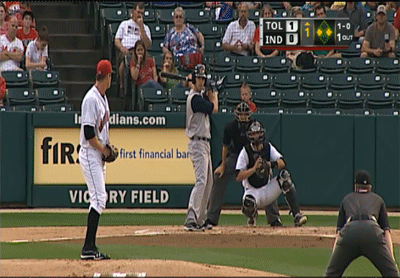
Cole registered just a single punchout the first time through the order, as batters continued to sit on heat that the right-hander insisted on establishing with authority, but on his second trip through the lineup, Cole began to mix in his sharp slider with greater regularity. The results are evident in the pitch counts per batter—after the quick hits of the three-run first inning, Cole went at least three pitches deep with each of the next 11 hitters. The only potential issue was a repeated usage pattern, with Cole throwing second-pitch fastballs followed by third-pitch sliders to seven of the eight hitters he faced after the fire was doused in the first. In the fourth inning, the right-hander started going to the slider earlier in the count, evolving in his approach on his way to seven strikeouts and just a single walk over six innings.
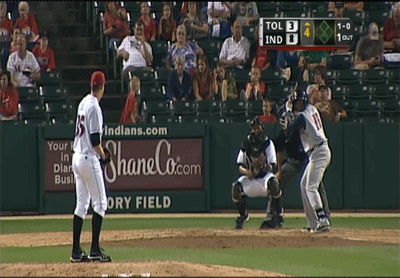
Mechanics Report Card
|
Balance |
55 |
|
Momentum |
40 |
|
Torque |
65 |
|
Posture |
60 |
|
Release Distance |
40 |
|
Repetition |
50 |
The mechanical baselines for Cole's delivery are impressive, particularly the incredible hip-shoulder separation that fuels his high-octane heat. The 2011 top pick relies on hip-heavy torque, in the sense that he uses minimal upper-body load but instead utilizes a late trigger of trunk rotation that allows his hips to rotate to a greater degree before the shoulders fire. This technique is in contrast to another type of “hip-heavy” torque, in which a pitcher delays the rotation of the hips until after foot strike, and rather than allow for separation, instead fires hips and shoulders in near unison, using violent hip-rotation to whip the shoulders and throwing arm into release point.
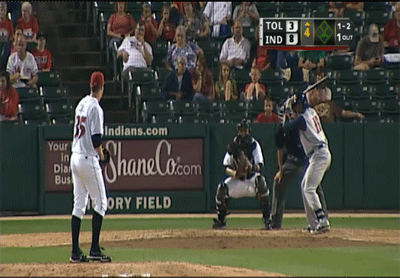
Cole has very stable posture with minimal head movement, and his balance is nearly ideal in the vertical plane. He displays some minor head-lag prior to foot strike, but the more worrisome imbalance occurs as his drag-foot prematurely lifts off the ground prior to pitch release, indicating that his head drifts too far in front of his body. As mentioned in the Futures Game article, Cole has a disrupted timing pattern to his momentum. His first move is directed at the target, but he slows down after maximum leg lift to greatly hinder his overall stride length. Cole then bursts forward just as he approaches foot strike and prepares for trunk rotation, though he plants the front foot before the body has had the opportunity to take advantage of any uptick in momentum. The issue is magnified when pitching from the stretch: while Cole avoids the slide step, he continues to limit his release distance with the slow momentum and abbreviated stride.

Based on the evidence from the game on September 1st, batters appear to be getting a long look at Cole's fastball, such that they were able to square up the pitch better than one might expect for a pitcher with such potent velocity. The pattern underscores the under-appreciated dimension of release distance, as the added flight distance required for the ball to reach home plate allows batters to key in on the pitch as if it were thrown a couple of ticks slower. In order to fix the problem, Cole could increase his momentum and lengthen his stride by ironing out the inconsistencies in his charge toward the plate. In conjunction with a higher leg kick, the uptick in momentum would allow Cole to greatly extend his stride while adding kinetic energy to the system. The only drawback is the ripple effect on timing, as Cole will need to learn a new timing pattern in order to master the delivery, though I should note that his current time signature is less than ideal.
Danny Hultzen
Selected by the Seattle Mariners with the second pick of the 2011 draft, Danny Hultzen appeared to be on the fast track to MLB face-time over the first couple months of the season, cruising through Double-A Jackson before earning a promotion to the Pacific Coast League, a circuit known for its hellish offensive environments. Hultzen fell on his face after the promotion, completely losing his delivery and resulting in a free-pass rate that skyrocketed to eight walks per nine. Batters teed off on Hultzen when his pitches did find the plate, and his dozen starts in the PCL averaged just over four innings per turn. The command issues worsened at the tail-end of the season, and Hultzen walked 14 batters in his last 7 1/3 innings of work.
|
2012 |
K/9 |
BB/9 |
H/9 |
|||
|
AA |
13 |
75.1 |
1.19 |
9.4 |
3.8 |
4.5 |
|
AAA |
12 |
48.2 |
5.92 |
10.5 |
8.0 |
9.1 |
I watched Hultzen's final start of the minor-league season, a September 3rd outing against the Fresno Grizzlies, and the visual evidence made it abundantly clear that the southpaw was suffering from a serious case of the yips. Hultzen wasn't just missing targets, he was sailing pitches like Nook LaLoosh in a bar fight with his catcher, with deliveries that were so badly mistimed as to dent the backstop. He actually had a no-hitter going in the fifth inning, as batters couldn't reach the majority of Hultzen's pitches with any semblance of solid contact. On multiple occasions, Hultzen missed so wide to the arm-side that it looked as if he was aiming at a completely different target.
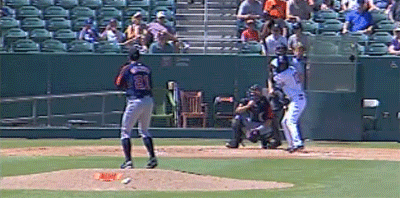
Hultzen's fastball has some natural movement, but he is going to need to command the pitch in order for it to play on the big stage. His approach was far more sophisticated than Cole’s, with a healthy mix of fastballs, changeups, and breaking pitches that he employed early and often, though a complete inability to hit targets sapped the advanced-sequencing strategy of most of its value. Hultzen's mechanics were a complete mess, with timing patterns that hit both extremes of the release-point spectrum, from heavily under-rotated pitches that sailed arm-side to completely-over-rotated pitches that found more shoe-black than borders of home plate. Hultzen was clearly off-kilter, with repetition that paled in comparison to his performance in the Futures Game. His ultimate ceiling is higher than what the following grades will suggest, but the southpaw has some mechanical deficiencies that need to be addressed in order for him to regain his top-prospect status.

Mechanics Report Card
|
Balance |
50 |
|
Momentum |
50 |
|
Torque |
55 |
|
Posture |
65 |
|
Release Distance |
50 |
|
Repetition |
20 |
The command issues proved to be mechanical in nature. Hultzen's repetition is the easiest element to blame, as his complete disarray of mechanical timing and positioning earned him the lowest score on the scouting scale. Complicating matters, timing and repetition are factors of the entire pitch cycle that result from the preceding links in the kinetic chain. Hultzen's struggles to repeat his release point could stem from any combination of elements in his delivery, though the other grades on his mechanics report card suggest a solid mechanical profile. He does have some potential issues with balance: while I like the fact that he starts with some bend in the knees to find an early balance-point, Hultzen has a tendency to bend the knees suddenly, which causes him to bounce into his motion on occasion.
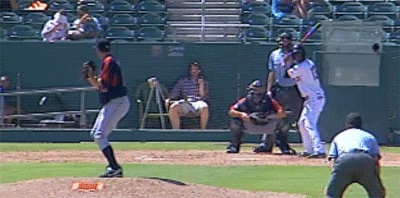
The most distinctive aspect of Hultzen's delivery is an extremely closed stride, with which he directs his energy on a line that leads behind the left-hand batter's box. The extreme stride-angle would make a LOOGY proud, but with aspirations to start, Hultzen would be best served by a strategy that was designed to retire hitters on both sides of the plate. In that respect, disaster pitches like the one in the first GIF actually traveled exactly where he had directed them. Throwing strikes like the one in the above GIF requires Hultzen to over-rotate his shoulders and execute a very late release of the baseball.

The consequence of the closed stride is that Hultzen rarely has the opportunity to square his shoulders to the target as the throwing arm begins to fire into internal rotation. A potential solution is to have Hultzen play catch from his knees in order to find a natural alignment of the hips that brings his shoulders square to the target, and then anchor on that position when establishing his set-up position on the mound. The technique would allow the Mariners to take advantage of his natural delivery along a trajectory that is easier for the southpaw to repeat consistently.

Much has changed since the Futures Game, when Hultzen sported his signature closed stride but still managed to repeat his delivery and hit targets with surprising ease. Hultzen's rapid skill degradation underscores a couple of general rules about pitching prospects, the first of which is that young players are different creatures each time they take the mound, with wild swings in performance that can crop up throughout their development. The second takeaway is the repeated implications for mechanical timing, an element that is so critical to pitch execution and yet so sensitive to changes in the kinetic chain that a mere rush of adrenaline can throw a delivery completely out of whack.
Thank you for reading
This is a free article. If you enjoyed it, consider subscribing to Baseball Prospectus. Subscriptions support ongoing public baseball research and analysis in an increasingly proprietary environment.
Subscribe now
Momentum can be the quickest fix, as I have seen players make such adjustments in a single day, however the ripple effect on timing can throw a wrench into things. Most pitchers actually do a better job of repetition once they jack up the momentum, but there are others who will struggle until they find the pace that fits their time signature.
Repeatability is the most difficult element to address, given that it is sensitive to all of the other links in the kinetic chain. Just when you think a pitcher has his timing down, something will crop up that will throw him off track. Release distance is also a function of multiple variables, including momentum, posture, glove position, timing, etc.
Other elements such as balance, torque, and posture often require that the athlete improve his functional strength and flexibility, so it can take longer for them to establish the physical baselines necessary for improvement.
My perpetual goal is to open up the landscape of things to see when watching a ballgame, so that's the greatest compliment that I could receive.
It's also funny that you mention the teammate thing, as my original idea was to rock pairs of teammates like Cole/Taillon, Hultzen/Walker, and Bauer/Skaggs. In the end I decided to open up the scope of the series, but I think that teammates are a great way to go in future articles.
Thanks for the idea, and I appreciate the descriptive qualities of your post.
In any case, love the series and your work.